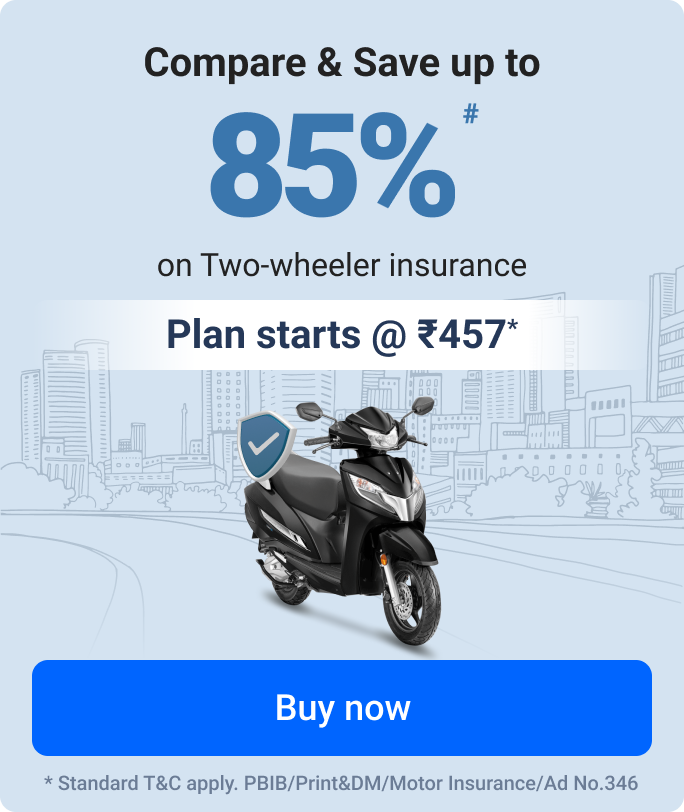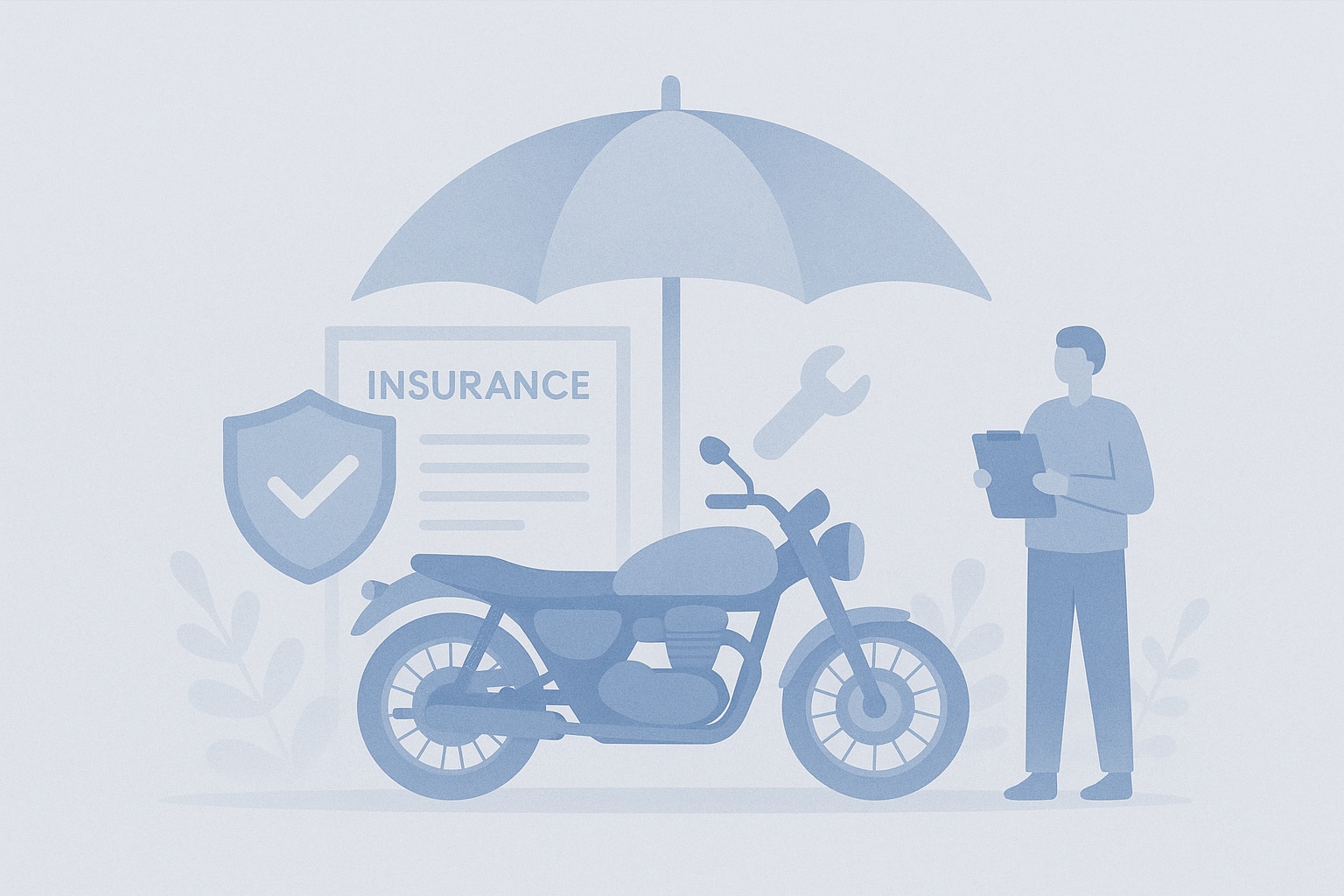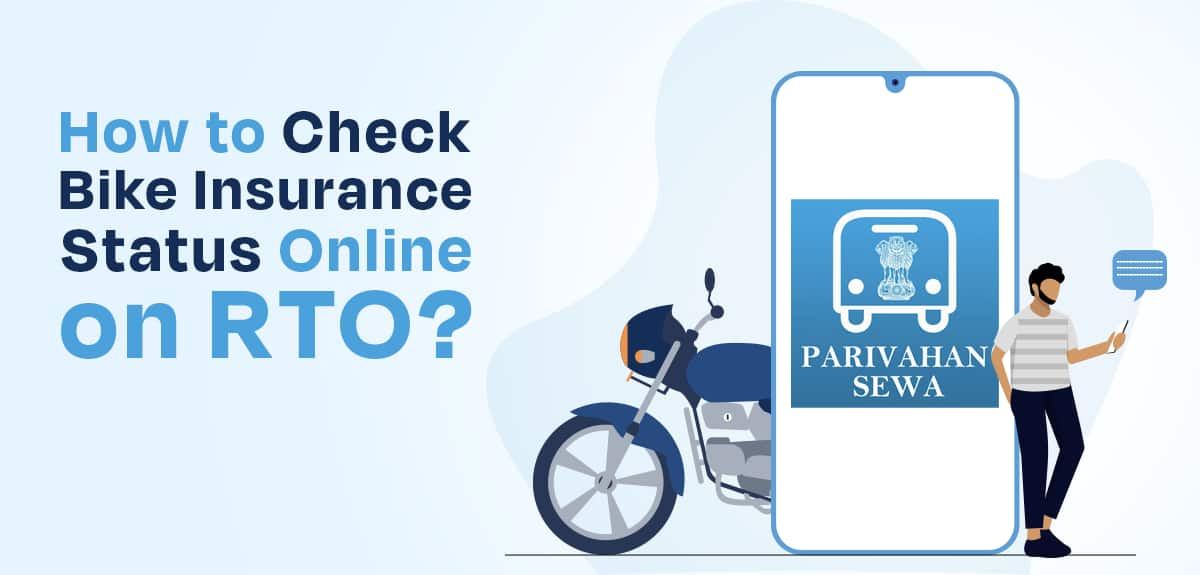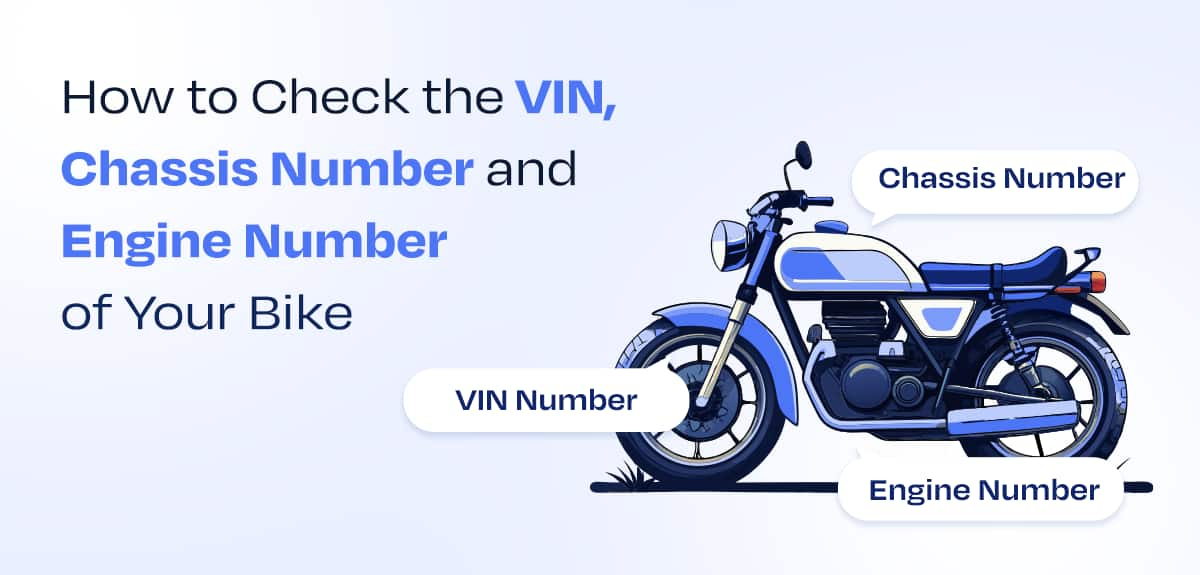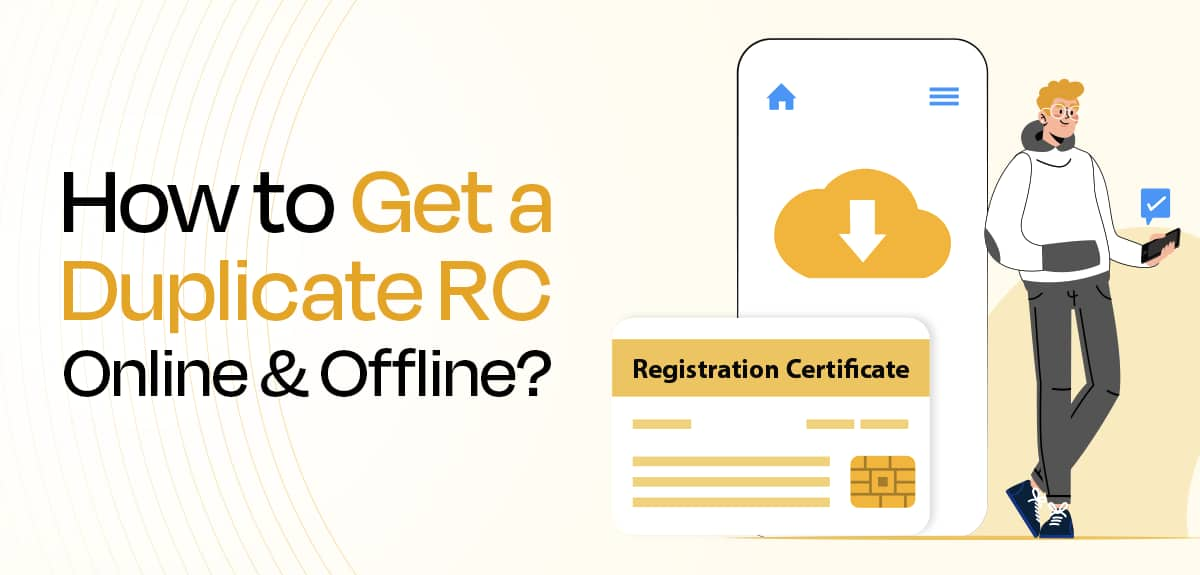Know Everything About Two-Wheeler Batteries
A two-wheeler's battery is a small yet powerful component that keeps your bike or scooter running smoothly. It helps store the electrical energy and supplies it to the engine, giving power to the headlights, tail lamps, indicators, horn, and other electronic parts. In this article, you will learn about two-wheeler batteries, including their types, lifespan, maintenance, costs, and even how battery condition can influence your bike insurance premium.
What is a Two-Wheeler Battery?
A two-wheeler battery is a rechargeable device that delivers the electrical power required to operate a motorcycle or scooter. It plays a vital role in:
- Electric start (starting the engine).
- Operating headlights, tail lamps, and indicators.
- Running accessories like mobile chargers, digital speedometers, and GPS systems.
Ultimately, a healthy two-wheeler battery ensures smooth rides, reliable starts, and better performance.
Types of Two-Wheeler Batteries
Usually, there are 4 types of two-wheeler batteries available in the market. The following are the features and characteristics of them:
a) Lead-Acid Batteries
- These batteries are traditional, affordable, widely available, and readily available in the market.
- It requires regular maintenance, such as topping up distilled water on time.
- Lifespan of the lead-acid batteries: 2-3 years.
b) Maintenance-Free (MF) Batteries
- These are sealed, spill-proof, and low-maintenance batteries.
- Longer lifespan than lead-acid batteries.
- Lifespan of the maintenance-free batteries: 3-4 years.
c) Gel Batteries
- As the name suggests, these batteries use gel electrolyte instead of liquid acid.
- These are resistant to vibrations and are also eco-friendly.
- Lifespan of the gel batteries: 3-5 years
d) Lithium-Ion Batteries
- These batteries are generally found in electric bikes and scooters.
- They are lightweight, quick charging, and come with a long-lasting working capacity.
- Lifespan of the lithium-ion batteries: 4-7 years
Average Lifespan of a Two-Wheeler Battery
| Battery Type | Average Lifespan |
| Lead-Acid Batteries | 2-3 years |
| Maintenance-Free Batteries | 3-4 years |
| Gel Battery Batteries | 3-5 years |
| Lithium-Ion Batteries | 4-7 years |
Factors Affecting the Lifespan of a Two-Wheeler Battery
There are multiple factors that can influence how long your two-wheeler battery lasts. Understand them below and extend the life of your battery:
-
Usage Frequency
How often you ride your bike directly impacts battery health, for example:
- Regular Usage: Keeps the battery charged and active, preventing sulphation (a condition where lead sulphate crystals build up on the battery plates).
- Infrequent Usage: If the bike is left unused for long periods, the battery may lose charge and degrade faster.
Tip: Even if you don't ride daily, start your bike at least once every 15 days to keep the battery in good condition.
-
Weather Conditions
Extreme weather can shorten battery life. Here is how it affects:
- High Temperatures: Heat accelerates chemical reactions inside the battery, causing water evaporation (in lead-acid batteries) and plate corrosion.
- Cold Temperatures: Reduce the battery's ability to hold a charge and slow chemical activity, making it harder to start the bike.
Tip: Park in shaded areas during summers and in a covered space during winters.
-
Maintenance Quality
Proper care and timely maintenance can add years to your battery's life. For lead-acid batteries, checking and topping up electrolyte levels is essential. Keeping terminals clean and corrosion-free ensures efficient current flow. Checking wiring and securing battery mounts prevents vibration damage.
Tip: Include battery inspection in your bike's regular servicing schedule.
-
Charging Habits (For EVs)
For electric bikes and scooters, charging patterns play a significant role:
- Overcharging can overheat the battery and reduce its lifespan.
- Too often, deep discharging (running the battery to 0%) stresses the cells.
- Using non-recommended chargers or local chargers can cause inconsistent charging and damage.
Tip: Keep your EV battery charged between 20% and 80% for optimal health.
Signs That Your Battery Needs Replacement
There are a few warnings or signs that you need to change the battery:
- The engine fails to start or starts slowly
- Dim headlights
- Weak horn sound
- Flickering dashboard lights
- Frequent jump-starts
- Battery warning light in modern bikes
How to Maintain a Two-Wheeler Battery?
Here are a few suggestions that you can incorporate to maintain your two-wheeler's battery:
For Petrol/Diesel Bikes
- Ride regularly to keep the battery charged
- Keep battery terminals clean
- Check electrolyte levels (lead-acid only)
- Avoid excessive use of electrical accessories
For Electric Bikes
- Charge after rides if the battery is below 40%
- Avoid overcharging or complete discharging
- Store in a cool, shaded place
- Use manufacturer-approved chargers
Cost of Two-Wheeler Batteries in India
The table below showcases the different types of batteries used in Indian two-wheelers and their general price range:
| Battery Type | Price Range (₹) |
| Lead-Acid | 900 - 2,000 |
| Maintenance-Free | 1,200 - 3,500 |
| Gel Battery | 2,000 - 4,000 |
| Lithium-Ion (EV) | 15,000 - 70,000 |
Batteries in Electric Two-Wheelers
The batteries of e-bikes or e-scooters are extremely different from those of petrol vehicles, as these are the powerhouse or entire source of power for these e-vehicles.
Key Points to Keep in Mind for E-Bikes
- Use Lithium-Ion or Lithium Ferro Phosphate (LFP) batteries
- The capacity of a battery is measured in kWh, which determines range
- Battery replacement cost can be 30-50% of the bike's value
How Does Battery Condition Affect Bike Insurance Premium?
Petrol/Diesel Bikes:
- Battery condition has minimal direct impact on the bike insurance premium.
- Bike insurance companies may factor in electrical system risk in high-end bikes with advanced electronics. However, you must buy or renew a two-wheeler insurance policy to avoid any financial stress during any unforeseen circumstances.
Electric Bikes:
- Battery value significantly affects Insured Declared Value (IDV).
- Newer, healthier battery = higher IDV = slightly higher premium.
- Older battery = lower IDV = lower premium.
- Add-ons like battery protection cover with an e-bike insurance policy increase the premium slightly but give valuable protection.
Tip: If you replace your battery, inform your insurer to update IDV and avoid claim issues.
Battery Protection Add-On in E-Bike Insurance
Some bike insurance companies offer battery protection as an optional under e-bike insurance coverage. It comes with the following features:
- Covers damage from accidents, fire, or water ingress
- Covers repair or replacement costs
- Excludes normal wear and tear
How to Replace a Two-Wheeler Battery?
For replacing a petrol bike or scooter's battery on your own, follow the tips below:
- Identify the correct battery type for your bike
- Switch off the ignition
- Disconnect the negative terminal first
- Remove the old battery and insert the new one
- Connect the positive terminal first, then the negative
- Test before riding
- For EVs, always get a replacement from an authorised service centre.
What is Your Environmental Responsibility as a Two-Wheeler Owner?
As a responsible bike owner, it is your responsibility to keep these in mind while choosing your two-wheeler's battery:
- Old batteries contain harmful chemicals (lead, acid, lithium)
- Return to authorised dealers for recycling
- Avoid throwing in regular garbage
- Use battery exchange programs for discounts
FAQs – All About Two-Wheeler's Battery
-
Q. What is the life of a 2 wheeler battery?
Ans: The typical lifespan of a two-wheeler battery depends on its type and usage. However, it ranges from 2-5 years and proper care, such as regular charging and avoiding deep discharges, can help you extend its life. -
Q. When should a bike battery be replaced?
Ans: A motorbike's battery needs replacement after 3-5 years. However, this range varies based on usage and maintenance. Slow engine cranking, dimming headlights or tail lamps, slow buzzing horns, or the battery failing to hold a charge are a few signs that indicate a battery needs replacement. -
Q. How to start a bike if the battery fails?
Ans: If your bike's battery is dead or weak, you can try the following methods to start it, depending on the type of bike you own:- Kick start for bikes with a kick lever.
- Jump-start with an external battery if the kick lever is unavailable.
- Replace or recharge the battery.
-
Q. Does two-wheeler insurance cover battery damage?
Ans: Yes, in a comprehensive bike insurance policy, damage is from accidents or covered events. -
Q. Does battery condition affect bike insurance premiums?
Ans: For petrol bikes, not much. For EVs, battery health affects IDV and premium. -
Q. Is battery replacement costly for electric bikes?
Ans: Yes, ₹15,000–₹70,000 depending on capacity and brand. -
Q. Should I buy a battery protection add-on cover in electric bike insurance?
Ans: Yes, you must get it as the electric bike has a high replacement cost for fixing the damaged battery.
^The buying/renewal of insurance policy is subject to our operations not being impacted by a system failure or force majeure event or for reasons beyond our control. Actual time for a transaction may vary subject to additional data requirements and operational processes.
*TP price for less than 75 CC two-wheelers. All savings are provided by insurers as per IRDAI-approved insurance plan. Standard T&C apply.
*Rs 538/- per annum is the price for third party motor insurance for two wheelers of not more than 75cc (non-commercial and non-electric)
#Savings are based on the comparison between the highest and the lowest premium for own damage cover (excluding add-on covers) provided by different insurance companies for the same vehicle with the same IDV and same NCB.
*₹ 1.5 is the Comprehensive premium for a 2015 TVS XL Super 70cc, MH02(Mumbai) RTO with an IDV of ₹5,895 and NCB at 50%.
*₹457/- per annum (₹1.3/day) is the price for third-party motor insurance for private electric two-wheelers of not more than 3KW (non-commercial). Premium is payable annually. The list of insurers mentioned is arranged according to alphabetical order of the names of insurers respectively. Policybazaar does not endorse, rate or recommend any particular insurer or insurance product offered by any insurer. The list of plans listed here comprise of insurance products offered by all the insurance partners of Policybazaar. For the complete list of insurers in India, refer to the Insurance Regulatory and Development Authority of India website: www.irdai.gov.in

